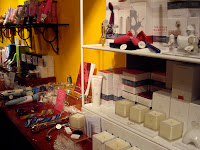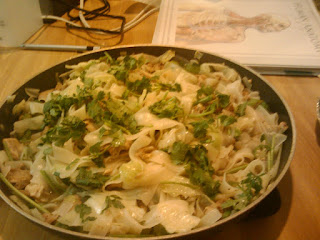"Why do you want to climb Mount Everest?"
"Because it's there"
- George Mallory
This summer of 2010, I ventured to climb two amateur mountains: Mt. Kinabalu in Kota Kinabalu, Malaysia, and Mt. Fuji (富士山)in Japan. The first mountain climb was with an intrepid tour group and was a breathtaking experience. However, due to heavy rains, we were not able to climb to the summit. So, I decided to climb Mt. Fuji alone during my travels in Japan.
Now, Mt. Fuji is said to be a mountain that one should gaze at from a distance - not climb. Nonetheless, thousands of people go on the climb a year (climbing season is from July-September). Needless to say, the mountain is very popular and can be extremely tourist-y. The usual route is to take a bus to the 5th station 五合目 of the Yoshida trail (吉田口) and to climb to one of the mountain huts (山小屋), arriving late afternoon. Then, climbers will wake up very early in the morning (around 2am) and climb to the summit to view the sunrise. So many people attempt this climb that during peak times, it is necessary to make reservations at the mountain huts, and the morning climb is more like waiting in an elevated line.
I'm not a huge fan of popular tourist attractions, but I really needed to climb to the summit of one mountain. So, I decided to make my Mt. Fuji climb as unique and personal as possible. And this is how I did it.
The Route
I looked into the oldest, most historical route used by Fuji Pilgrims (Fujiko 富士誇)in the Mt. Fuji pilgrimages, which is the now common Yoshidaguchi trail(吉田口登山道).
 |
| History of the shrine and the pilgramage. Fuji Sengen Shrine, Japan |
However, what is not so common is actually making the full pilgrimage, which starts at the base of the mountain at the Fuji Sengen Shrine(富士浅間神社). From that point, the trail to the summit is about 18 km (estimated full ascent time 11 hours), and climbers will experience the quiet solitude within the lush forests of the mountain. Also, most people climb the mountain to see the morning sunrise. I decided that I also wanted to see the sunset.
 |
| Information on the distance and estimated travel tim |
So, I started my journey (July 13) at Kawaguchi-ko (河口湖)Station Inn, where I spent the night before my climb. I took a taxi to the Fuji Sengen Shrine at around 4am the next morning (July 14) to start my journey. It was quite dark and eerie with the greenish lighting and statues, and especially since I was completely alone. Fortunately, I was able to text my family and boyfriend in the US as I waited for it to become a bit lighter outside. Thank goodness for cell phones and time differences.
 |
| View of a shrine Torii (around 4:30am) |
|
Finding the trail was not too difficult (having a Lonely Planet guidebook with me was handy). From the shrine to the 5th station, the path was well-kept, peaceful, and shaded. The road was a steady, low incline, which can actually be quite tiring if you walk for hours on end. During this entire segment of my walk, I ran into maybe 2 other lone travelers as well as some actual monks! A serene experience... Once I got to the main mountain huts around station 5, the trail became more crowded as expected.
 |
| Mt. Fuji Pilgims, 富士誇. I could hear their traditional chanting from afar, frightening a little at first. |
I arrived at the Goraikokan(ご来光館) on the 8.5 station at around 1-1:30pm that day. And yes, I was absolutely exhausted. Food is all instand, but the 800 yen kitsune udon tasted absolutely delicious. I was able to check-in for a sleeping space even though I didn't make prior reservations. Expect to pay maybe 6000-8000 yen (depending on whether you ask for breakfast/dinner) per night at the mountain huts. Also, you'll be sleeping very close to the other climbers.
 |
| Sign at Goraiko-kan. 御来光感。 | | |
 |
| Bunk-bed/cots at the mountain hut. Sleeping sardine-style. |
I took a much needed rest and slept until about 5-6pm. In the evening, I ventured to the summit alone. With no one on the trail, it took my about 30 minutes. At the summit, I really felt as if the mountain was my own. There were only about 5-6 other people there around this time. I secretly followed a group of mountain hut employees who crossed one of the restricted areas to get to higher ground. Unfortunately, the sky was a little cloudy so I couldn't see the sunset very well. However, on my way down, I did see a optical phenomenon called 逆富士 (gyaku-fuji) where the mountain is reflected upside on the clouds.
 |
| Gyaku-Fuji 逆富士 |
It was a surreal experience.
That next morning (July 15), I could already hear climbers heading to the top at 2 am. Sunrise would be around 4:30 am, so I didn't venture out until 3:15 am or so. As soon as I started climbing, however, I understood why people started the climb so early -- the path was completely packed. The stretches of people holding torches and headlamps looked like a snake moving up the mountain. What took me 30 minutes the day before took over an hour the next morning. Luckily, there were points on the trail where people kindly split into the slow vs. fast line, so I was able to gain some time there. Besides the fact that lines in general are a hassle, the main problem with a slow line is that your body starts feeling the cold if you're not constantly moving.
One at the summit (again), I quickly found a good viewing spot for the sunrise amidst the swarm of people. Standing and waiting for the main event did get colder and colder with time, but the surrounding people were very social and talkative, so it wasn't all too bad. Also, cellular reception still worked at 3700 ft., so I was able to text and send pictures to family and boyfriend.
 |
| Waiting for the sunrise 御来光. One of the five surrounding lakes |
Sunrise itself was definitely worth it. (I'll refrain from putting pictures up, so everyone can experience it for themselves). That quick moment where I saw the first bit of sun peak through the distant clouds lined with orange light --- incredible. I stayed up at the summit and watch the sun climb up the sky. The summit so bright and warm once the sun is up. And that day, the sky was a little cloudy still, but it actually added to the experience because the sun's light reflected from the clouds, making me feel wrapped in a warm, white light. Sitting on a bench, sipping on some hot cocoa, I basked in the light.
 |
| A warm world above the clouds |
The descent was basically a run for me. I find that climbing down slowly actually tires me legs out more and it's easier to just use the downward momentum (granted, must be careful not to trip). I also wanted to be down at the base before noon time because I knew I would have to walk an extra 2km from the temple to the Fuji Yoshida Station (unless I could catch a taxi, which didn't happen).
Tips and Advice
I brought along with me one small backpack. Inside, I stuffed food, plenty of sunscreen, a notebook, and I also recommend buying one of those ziploc travel vacuum bags (available at REI/other travel stores). Inside, I put an outer hard shell jacket, a fleece jacket, an inner wool long-sleeve, two pairs of leggings, a ski hat, and gloves). Around my waist, I tied two thin jacket layers. That's all I needed, and I am very glad I packed and carried lightly.
Be prepared for a difficult climb starting around station 6. The inclined path is made of lava rocks, which offers little support or push for the legs. I was crazy and wore sneakers, but most people will definitely recommend some strong hiking boots
 |
| The rocky climb to the summit. 吉田口、富士山 |
What to wear:
For my ascent, I just wore a cap, long, cargo pants, a sports tank-top, and a thin layer over that to protect myself from the sun. Unfortunately, once you get to station 5, there is very little shade, so wear sunscreen or cover your body loosely if you don't want to tan/burn. From station 8.5 to the summit, I did switch my thin outer layer to a warmer wool layer, but even that got a little hot once I was moving around. In the morning, I really recommend wearing as lightly as possible in the beginning. I know it's really cold at first, but your body will warm up as long as you find a way to keep yourself moving. The worse things that can happen is for you to start sweating, which will make the summit even colder, especially while waiting for the sunrise. So for me, I wore two pairs of leggings, my cargo pants, a an athletic tank-top, my wool layer, hat, and gloves for the morning ascent. Once at the summit, start putting on your layers one by one. I would also recommend hooking your digital camera case onto your waist as well (easy to pull out and put back in).
Food/Fluids:
Eat a hearty breakfast. Definitely bring snacks (nuts, chocolate, granola bars), a minimum of 1.5 liters of water even if you plan to buy fluids on the mountain (expect to pay 400-500 yen for a 500ml bottle of Aquarius) and sports drinks/jelly drinks they sell in Japan. I probably should have brought more than 1.5 liters, but I also did not want to carry too much on my back/shoulders. The liquids, I carried in the pockets of my jacket that I tied around my waists, and the water bottle I put in a waist bottle carrier I bought for 10rm in Malaysia. I personally like carrying heavier things around my waist than on my shoulders.
All in all, climbing Mt. Fuji from the very base may not be the easiest of adventures, but it's definitely doable, exciting, and memorable. You should be somewhat fit, though, and be able to enjoy walking and climbing for 9+ hours.
But yes, if you're even thinking about climbing Mt. Fuji, do it the traditional way. It is so rewarding in the end.





































